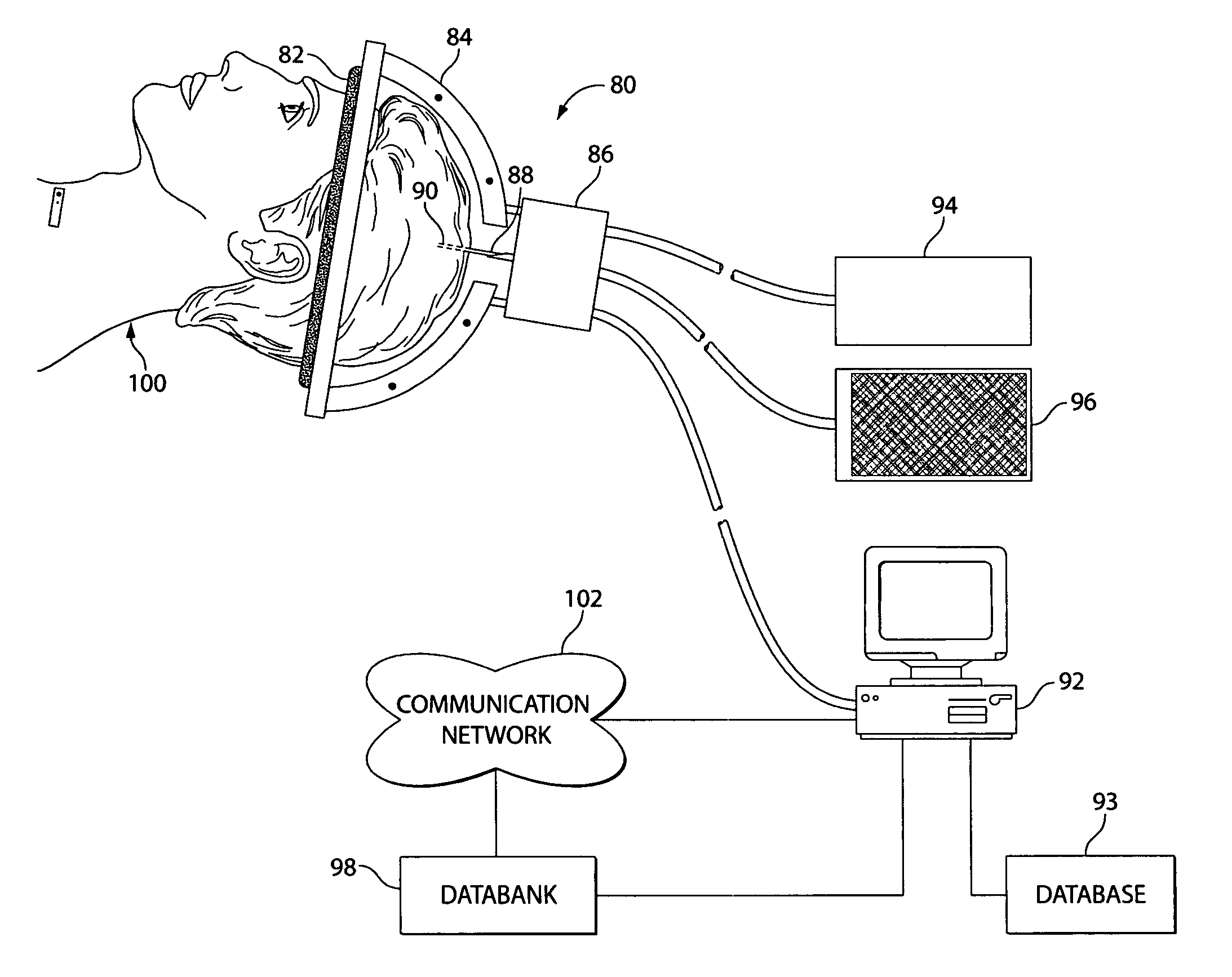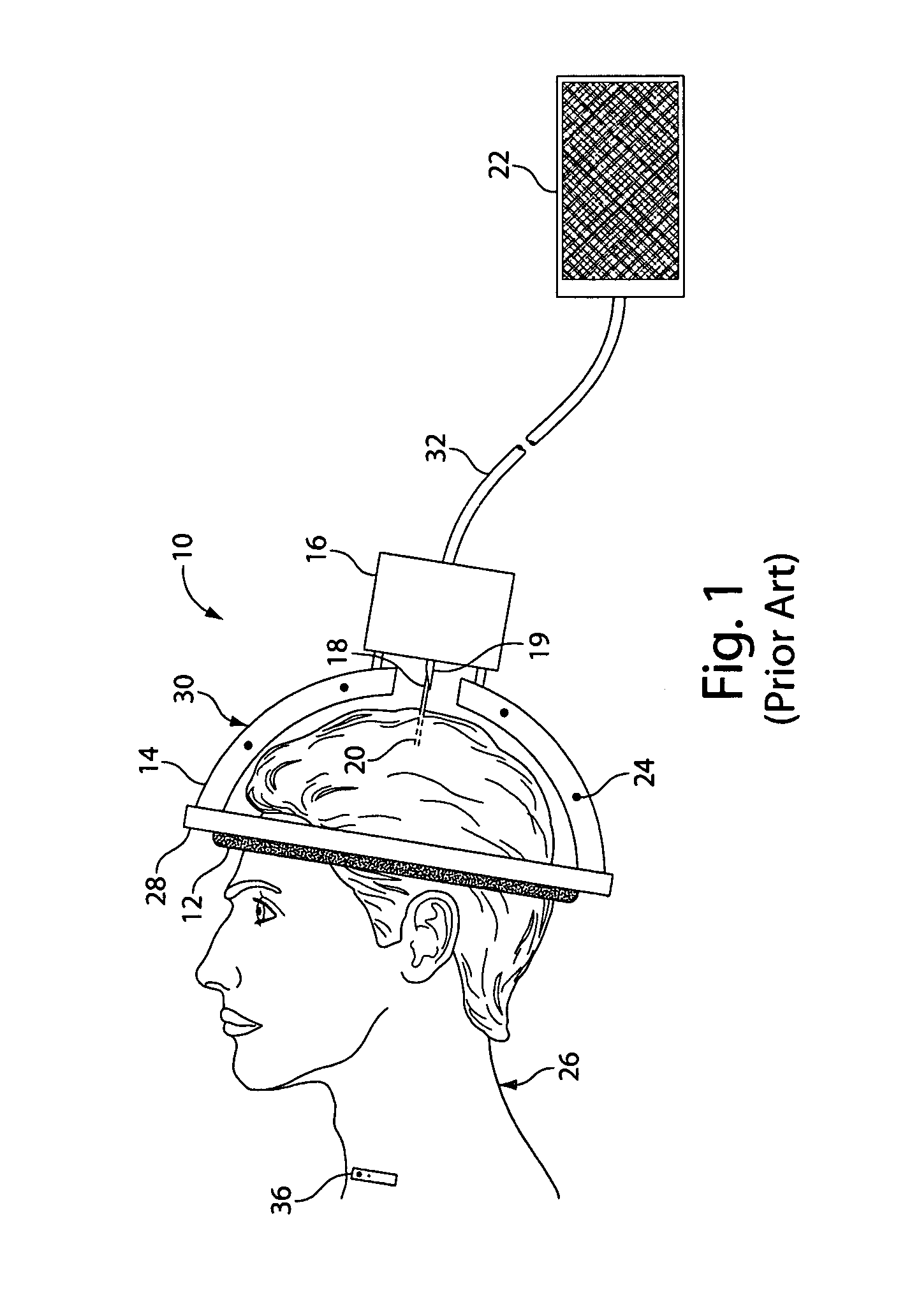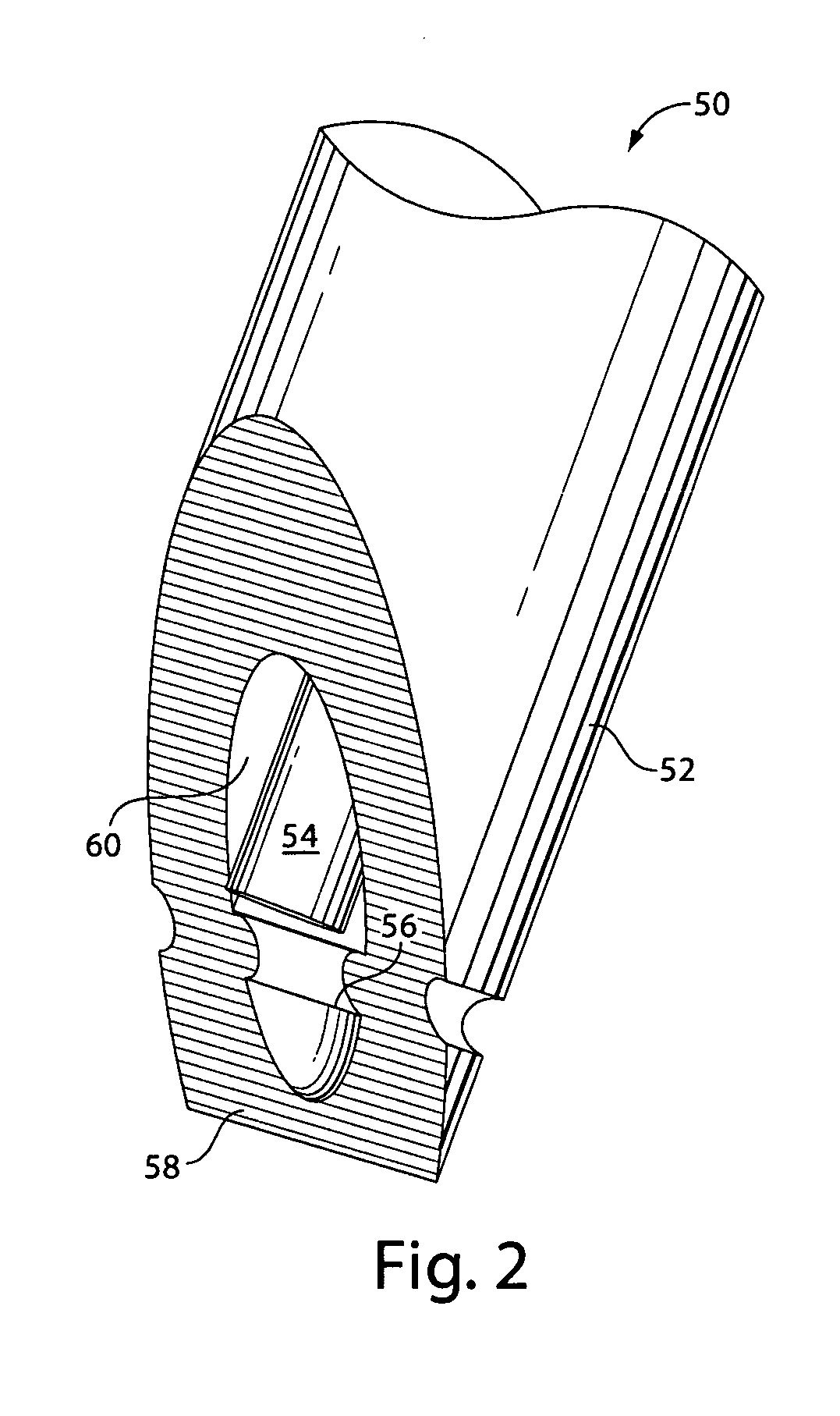Deep brain stimulation
a brain stimulation and electrode technology, applied in the field of deep brain stimulation, can solve the problems of the degree of brain tissue damage in the process, the most invasive and time-consuming procedure, and the most error-prone component of deep brain stimulation treatment, so as to achieve less invasiveness, less time-consuming, and more reliable
- Summary
- Abstract
- Description
- Claims
- Application Information
AI Technical Summary
Benefits of technology
Problems solved by technology
Method used
Image
Examples
Embodiment Construction
[0023] Embodiments of the invention are directed to techniques for deep brain stimulation. Embodiments of the invention provide electrodes for mapping 3-dimensional areas of the brain. For example, embodiments of the invention may use a splaying electrode or an electrode that can be inserted and re-inserted into a cannula positioned in the brain. Embodiments of the invention allow at least partial automation of placement of a probe in deep brain stimulation. Embodiments of the invention include methods, using digital signal processing techniques, of electronically discerning the difference between normal nerve firings and improper nerve firings. Electronic differentiation can be used in a system of motor-driven, computer-controlled probe or probes that could be driven down at a constant rate by a motor. In embodiments of the invention, a computer is used to control the translation of a locational probe rather than hand controls used by a surgeon. Other embodiments are within the sco...
PUM
 Login to View More
Login to View More Abstract
Description
Claims
Application Information
 Login to View More
Login to View More - R&D
- Intellectual Property
- Life Sciences
- Materials
- Tech Scout
- Unparalleled Data Quality
- Higher Quality Content
- 60% Fewer Hallucinations
Browse by: Latest US Patents, China's latest patents, Technical Efficacy Thesaurus, Application Domain, Technology Topic, Popular Technical Reports.
© 2025 PatSnap. All rights reserved.Legal|Privacy policy|Modern Slavery Act Transparency Statement|Sitemap|About US| Contact US: help@patsnap.com



